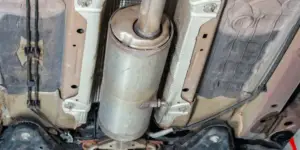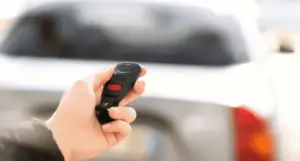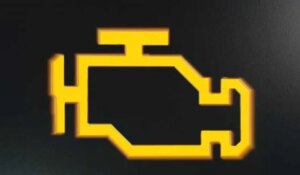So rather than mess about trying to diagnose your car’s problem, you’ve done the right thing and plugged in the OBD reader to get the codes, only to find the car won’t start after using it.
Pretty frustrating, isn’t it?
The good news is the OBD reader will not cause any problems that weren’t there already.
This article will explain what can cause an OBD reader to stop your car from starting and the checks you can do to get your car up and running again.
The problem will almost certainly lie with the car’s ECU – the car’s computer. As the OBD reader communicates with the ECU, it can cause temporary issues with it. When the ECU detects a problem it cannot process properly, it will stop the car from running completely so as not to cause any damage.
As we have discussed, the ECU will not be damaged by the OBD reader; therefore, it needs to be reset. The ECU is like your personal computer; sometimes, the best way to fix it is to turn it off and turn it on again to reset it.
To get your car started after using an OBD2 reader
- Disconnect the battery
- Check battery voltage
- Check fuses
The simplest way is to remove the power source briefly from the ECU.

How To Get Your Car Started After Using An OBD2 Reader
Disconnect Battery
Disconnect and reconnect your battery cables, which should rectify the situation as it causes the ECU to reset after power is restored.
If that doesn’t work, it’s likely that plugging the OBD reader into your car and the car not starting is a pure coincidence.
Weak Battery
The most likely cause is that the battery was close to failing before you used the OBD2 reader, and may need to be recharged or replaced. If you have a multimeter connected to the positive and negative terminals of the battery and look for a reading of 12.6 volts.
Anything less than this indicates that your battery is low on charge and may prevent the car from starting.
If the voltage is slightly lower than 12.6 V, you may notice the car is trying to turn over but doesn’t quite have enough juice to complete the process. If the voltage is way less than 12.6 V, you may get a clicking sound.

If your battery is fully charged, we need to look further into what might be causing the issue.
Check Fuses
The next most likely issue is a blown fuse. Simply plugging an OBD reader into your car is unlikely to blow fuses, but this can occasionally happen.
The most likely blown fuses that would stop your car from starting are the fuel pump fuse. This fuse is positioned in the fuse box under the hood or the cabin on the passenger side under the dashboard.
So we have examined all the more likely causes relating to resetting the ECU, charging the battery, and checking fuses.
The next checks are coincidental faults and are not specific to an OBD reader.
Is the brake pedal hard?
If there’s an issue with your brakes, the car will not start. To find out more about the causes and fixes of your car not starting and the brake pedal being hard we have put together an informative article.
Hot Weather?
In hot conditions, your car can sometimes overheat and not start even when stationary especially if it hasn’t been serviced and maintained well. Hot weather can exacerbate failings in your car and bring maintenance issues that should be addressed to your attention.
Other common causes of a car not starting are:
- Bad starter relay
- Bad starter motor – Signs of a Bad Starter Motor
- Weak battery
- Low coolant – Low Coolant Causes and Fixes
- Bad coolant sensor
- Bad spark plugs
- Corroded battery terminals
- Faulty fan sensor
- Clogged air filter
- Clogged fuel filter
As mentioned, the above causes are not related to the OBD reader, but if you haven’t conducted maintenance on your car, these could be the issues that have caused it not to start.
Can You Start A Car With An OBD2 Reader?
In principle, yes, but it would be extremely difficult. Good quality OBD readers specific for a car make have far more options than generic ones available on stores like Amazon.
These more complex OBD readers allow limited interaction where you can turn off electrical components using the port.
In truth, you may have to tell deeply into the ECU programming to have any chance of succeeding in doing this. If your car isn’t starting, the OBD reader picks up a problem in the ECU. It would be counterproductive to override this in any case, as you may cause further damage to your car.
Can An OBD II Reader Repair A Fault?
An OBD2 reader is a diagnostic tool, not a repair tool. In its simplest form, it reads for fault codes stored in your car’s ECU and displays them on the OBD2 screen. Most OBD readers allow you to clear the codes on the ECU, but this will not repair the fault.
This action clears the ECU’s memory. Once you start the car again, as soon as a sensor gives a signal to the ECU that it is detecting anomalies, the check engine light will come on again, and the code will once again be stored in the ECU.













